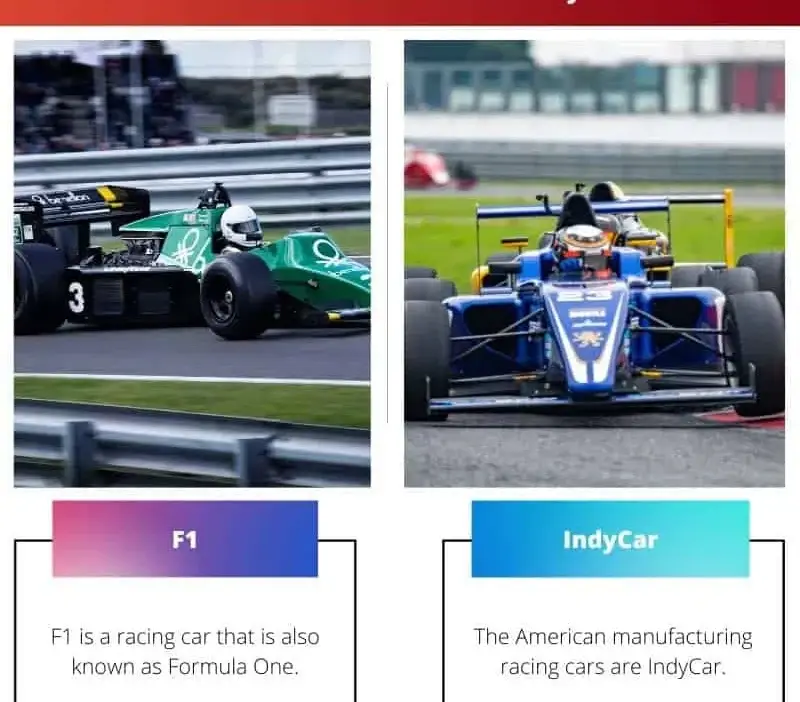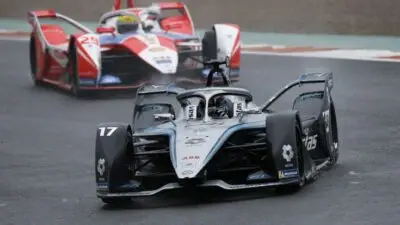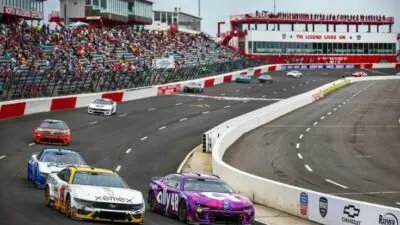Formula 1 and IndyCar represent the pinnacle of open-wheel racing, yet they differ significantly in multiple aspects. While both feature single-seat race cars driven by elite drivers, each series has developed its own unique identity shaped by technical regulations, racing philosophy, and geographical focus. The fundamental difference lies in their approach to competition: F1 is a constructor’s championship where teams design and build their own cars with massive budgets, while IndyCar uses standardized chassis with limited customization options to create closer racing at a fraction of the cost.

These motorsport disciplines showcase different racing experiences, with F1 emphasizing technological advancement and aerodynamic efficiency across global circuits, whereas IndyCar focuses on driver skill across a more balanced mix of oval tracks, street circuits, and road courses primarily in North America. The 2025 IndyCar schedule includes 17 races concentrated in one continent, while F1 travels to 24 races across 21 countries, highlighting their different geographical approaches.
Key Takeaways
- F1 cars feature custom-built chassis with sophisticated aerodynamics while IndyCar uses spec Dallara chassis, creating different performance characteristics and drastically different budgets.
- IndyCar races on a diverse mix of ovals, street circuits and road courses while F1 primarily competes on purpose-built road circuits around the world.
- IndyCar permits refueling during races and uses multiple tire compounds to create strategic variety, whereas F1 has banned refueling and employs different technical solutions to enhance competition.
Overview of Formula 1 and IndyCar
Formula 1 and IndyCar represent the pinnacle of open-wheel racing, with distinct histories, structures, and signature events that have shaped motorsport worldwide. Both series feature high-speed single-seater cars but differ significantly in their approach to competition and technical regulations.
History and Evolution
Formula 1 began officially in 1950 with the inaugural Formula 1 World Championship, though Grand Prix racing dates back to the early 1900s. The series has evolved from dangerous races on converted road circuits to a sophisticated global sport with cutting-edge technology and safety innovations.
IndyCar’s roots trace back to the first Indianapolis 500 in 1911. The series went through significant changes, including the split between CART and the Indy Racing League (IRL) in 1996, which divided American open-wheel racing until reunification in 2008. This period significantly impacted the popularity and development of IndyCar.
Both series have embraced hybrid technology and enhanced safety measures in recent years, responding to changing automotive trends and increased safety awareness.
Racing Series Structure
Formula 1 operates on a truly global scale with 24 races across 21 countries in the 2025 season. Teams are constructors who design and build their own chassis under strict technical regulations, creating distinct performance differences between teams.
IndyCar features a more standardized approach with all teams using the same Dallara chassis. The 2025 schedule includes 17 races exclusively in North America. This creates tighter competition due to more equal equipment.
The financial structures differ dramatically:
- F1: Teams operate with budgets reaching hundreds of millions despite cost caps
- IndyCar: Teams function with significantly lower budgets, typically under $15 million annually
This cost difference affects everything from car development to driver salaries, with F1 requiring much higher financial investment.
Key Championships and Iconic Races
The Formula 1 World Championship awards two prestigious titles each season:
- Drivers’ Championship
- Constructors’ Championship
The Monaco Grand Prix stands as F1’s crown jewel, challenging drivers with narrow streets and prestigious history dating back to 1929. Other iconic races include the British Grand Prix at Silverstone and the Italian Grand Prix at Monza.
For IndyCar, the Indianapolis 500 represents the most famous race in the series and possibly all of motorsport. Held annually since 1911 at the Indianapolis Motor Speedway, it draws over 300,000 spectators on race day.
The IndyCar Series Championship rewards consistency across all tracks: ovals, road courses, and street circuits. This variety tests drivers’ versatility in ways different from F1’s primarily road course calendar.
Fundamental Differences Between Formula 1 and IndyCar
Formula 1 and IndyCar represent distinct approaches to motorsport, each with its own philosophy and structure. While both feature open-wheel racing cars, they differ significantly in how they organize competition, build their cars, and where they race around the world.
Approach to Competition and Regulations
F1 and IndyCar follow fundamentally different philosophies when it comes to competition. F1 operates as a technology-driven championship where teams design and build their own cars within complex regulations. This creates significant performance gaps between teams based on their engineering and financial resources.
IndyCar, in contrast, uses a spec-car format where all teams use the same chassis (Dallara DW12) with aerodynamic kits. Teams can choose between two engine manufacturers: Honda and Chevrolet. This approach creates closer racing and puts more emphasis on driver skill.
The regulations in F1 change frequently and are highly detailed, covering everything from aerodynamics to fuel consumption. IndyCar rules tend to be more stable and straightforward, focusing on competitive balance rather than technological advancement.
Teams and Constructors
F1 features 10 teams that act as both constructors and competitors. Each team designs, builds, and develops their own cars throughout the season. This leads to vast budget differences, with top F1 teams spending hundreds of millions annually.
IndyCar teams purchase chassis and engines rather than building them. This allows smaller teams to compete effectively and keeps costs significantly lower. In 2025, IndyCar has approximately 25 full-time entries compared to F1’s 20 cars.
Ownership structures differ too. F1 teams are often owned by major automotive manufacturers (Mercedes, Ferrari) or large corporate entities. IndyCar teams tend to be owned by individual racing enthusiasts or smaller organizations, creating a more accessible entry point for new teams.
Race Locations and Calendar
The racing calendars highlight major philosophical differences between the series. The 2025 IndyCar schedule includes 17 races primarily in North America, while F1 features 24 races across 21 countries.
F1 races exclusively on road circuits and street courses, showcasing a global championship. The series emphasizes prestigious locations and modern facilities, with races in Monaco, Singapore, and other iconic venues.
IndyCar offers more variety in track types:
- Road courses (like Road America)
- Street circuits (Long Beach, Toronto)
- Oval tracks (including the Indianapolis 500)
This track diversity requires drivers to master different racing disciplines. The ability to race on ovals sets IndyCar apart from F1, with high-speed oval racing presenting unique challenges and dangers not found in F1.
Car Design and Technology
F1 and IndyCar represent different philosophies in racing car design despite both being open-wheel single-seaters. Their technical approaches reflect their racing environments and regulatory frameworks.
Chassis and Construction
F1 cars feature a carbon fiber monocoque chassis that teams design and build themselves. Each team creates a unique car, resulting in significant performance differences across the grid. These F1 cars are extremely lightweight yet incredibly strong.
In contrast, all IndyCar teams use a standardized Dallara chassis. This creates a more level playing field where driver skill often matters more than technical advantages. The IndyCar chassis is built to withstand the unique stresses of oval racing, making it more robust in certain aspects.
F1 cars typically weigh around 798 kg (with driver), while IndyCars weigh approximately 840 kg. This weight difference affects handling characteristics and acceleration profiles.
Aerodynamics and Downforce
F1 cars employ highly sophisticated aerodynamics with complex front and rear wings, intricate floor designs, and numerous small aerodynamic elements. Teams invest millions in wind tunnel testing and computational fluid dynamics to find tiny advantages.
IndyCars feature simpler aerodynamic packages with standardized components. They have two different aero kits – one optimized for ovals and another for road courses. This dual-purpose design reflects the series’ diverse racing calendar.
Downforce levels also differ significantly. F1 cars generate approximately 4-5 times the downforce of an IndyCar, allowing for much higher cornering speeds. IndyCars use the aeroscreen safety device, which protects the driver but creates additional aerodynamic challenges compared to F1’s halo system.
Engine and Powertrain Comparison
The heart of any race car lies in its engine, and F1 and IndyCar feature distinctly different approaches to power generation. These differences impact everything from performance to team economics and racing strategy.
Engine Specifications and Manufacturers
IndyCar uses a standard 2.2-liter twin-turbocharged V6 engine that produces between 600 and 750 horsepower, depending on the turbo boost configuration. These engines are supplied by just two manufacturers: Honda and Chevrolet. All IndyCar teams must use one of these engines, creating a more level playing field.
F1 engines, by contrast, are 1.6-liter V6 turbocharged power units that can reach up to 1,000 horsepower when combined with their hybrid systems. F1 has more engine suppliers, including Mercedes, Ferrari, Renault/Alpine, and Honda/Red Bull Powertrains.
IndyCar engines rev to approximately 12,000 RPM, while F1 engines can reach 15,000 RPM. This higher RPM contributes to the distinctive high-pitched sound of F1 cars compared to the deeper rumble of IndyCars.
Hybrid Systems and Power Delivery
F1 employs sophisticated hybrid technology with its Energy Recovery System (ERS). This system harvests energy during braking and from heat energy in the exhaust, storing it in batteries for later deployment as additional power.
The F1 hybrid system provides around 160 extra horsepower for approximately 33 seconds per lap, giving drivers strategic boost options. This complex hybrid technology is a key factor in F1’s higher development costs compared to IndyCar.
IndyCar introduced hybrid technology more recently, with a simpler system that provides a modest power boost. The IndyCar hybrid unit is identical across all teams, aligning with their philosophy of standardization to control costs.
The combustion engine in IndyCar delivers power in a more straightforward manner, often making these cars more physically demanding to drive due to less electronic assistance in power delivery.
Tires and Performance Variables
Tires represent one of the most critical differences between F1 and IndyCar racing, affecting everything from lap times to race strategy. Each series uses distinct tire suppliers, compounds, and management approaches that shape their unique racing characteristics.
Tire Compounds and Suppliers
IndyCar exclusively uses Firestone tires, with specifications designed to handle both road courses and oval circuits. These tires emphasize consistency and durability over ultimate performance, allowing drivers to maintain competitive lap times throughout longer stints.
Firestone typically offers two compounds for road and street courses – primary (harder) and alternate (softer) – plus a special compound for oval racing.
Formula 1, in contrast, uses Pirelli tires with a more complex range of compounds. Pirelli provides five dry-weather compounds (C1 through C5, from hardest to softest) plus intermediate and wet-weather options.
F1 tire compounds are engineered for maximum performance at specific temperature windows, making them more sensitive to track conditions but potentially delivering faster lap times when in their optimal range.
Pit Stops and Tire Strategies
F1 pit stops focus exclusively on tire changes, with crews able to replace all four tires in approximately 2.5 seconds. This lightning-fast service requires precise coordination among up to 20 crew members.
Teams must use at least two different tire compounds during dry races, creating strategic variety through tire selection and timing of changes.
IndyCar pit stops are more complex operations, combining tire changes with refueling. A complete stop typically takes under 10 seconds to change all tires and add 84 liters of fuel.
Tire strategy in IndyCar often revolves around managing wear over longer stints, particularly on oval tracks where consistent performance is crucial. The more durable Firestone compounds allow for fewer pit stops than typically seen in F1.
Race Formats and On-Track Differences
F1 and IndyCar feature distinct race formats that significantly impact competition and strategy. These differences extend to qualifying procedures, fueling approaches, and overtaking assistance systems that create unique racing experiences in each series.
Qualifying Procedures
F1 uses a three-segment knockout qualifying system. Drivers compete in Q1 (20 drivers), Q2 (top 15 from Q1), and Q3 (top 10 from Q2) to determine the starting grid. Each segment runs for a set time, with the slowest drivers eliminated after each session.
IndyCar employs different qualifying formats depending on the track type. For road and street courses, drivers compete in groups with the fastest advancing to the “Fast Six” shootout.
The Indy 500 qualifying is particularly distinctive, spanning multiple days. Each car completes a four-lap qualifying run, with positions determined by average speed. The fastest drivers compete in a “Fast Nine” session to determine the pole position and front rows.
Race Strategy and Refueling
F1 banned in-race refueling in 2010, making fuel management and tire strategy critical components of race planning. Teams must start with enough fuel to complete the entire race distance of approximately 305km (190 miles).
IndyCar permits refueling during pit stops, allowing cars to start with less fuel for better performance. This creates more strategic options as teams can choose between adding more fuel for fewer stops or less fuel for better speed.
Race formats also differ in length and structure. F1 races are time-limited to two hours of racing, while IndyCar events vary from shorter street races to the epic 500-mile oval races like the Indianapolis 500, which can last over three hours.
Push-to-Pass vs. Overtake Assist
Both racing series offer drivers temporary power boosts, but they function differently. IndyCar uses a push-to-pass system that provides an additional 40-50 horsepower when activated. Drivers receive a total allocation of seconds per race (typically 150-200 seconds) to use at their discretion.
F1 employs the Drag Reduction System (DRS), which opens a flap on the rear wing to reduce drag when a driver is within one second of the car ahead at designated detection points. This system can only be used in specific zones on the track.
These different overtaking aids reflect each series’ philosophy toward racing. IndyCar’s push-to-pass system offers more driver control, while F1’s DRS creates structured overtaking opportunities that prioritize close racing in predetermined sections.
Frequently Asked Questions
F1 and IndyCar racing showcase significant differences in technology, compensation, competition format, and international reach. These distinctions shape each series’ unique identity in motorsport.
What are the technical differences between an IndyCar and a Formula 1 car?
F1 cars are lighter than IndyCars, weighing approximately 1,753 pounds compared to IndyCar’s 1,630 pounds without fuel and driver. This weight difference affects handling and performance on different track types.
F1 vehicles feature highly sophisticated aerodynamics with complex front and rear wings designed for maximum downforce. IndyCars use more standardized aerodynamic packages that change based on whether they’re racing on ovals or road courses.
While both are open-wheel racers, F1 cars are more technologically advanced, with teams designing and building their own chassis. IndyCar teams all use the same Dallara chassis, creating more emphasis on driver skill than engineering advantages.
How do the salaries of IndyCar and F1 drivers compare?
F1 drivers command significantly higher salaries, with top drivers like Lewis Hamilton and Max Verstappen earning over $40 million annually. This far exceeds the compensation in IndyCar.
The average F1 driver earns approximately $10-15 million per year, while IndyCar drivers typically make between $500,000 and $3 million annually. Only the most successful IndyCar drivers approach the lower end of F1 compensation.
This salary gap reflects the massive financial difference between the two series, with F1’s global marketing reach and larger budget operations generating substantially more revenue.
What are the distinctions in race formats between F1 and IndyCar series?
IndyCar races include both oval tracks and road courses, with the iconic Indianapolis 500 being run on a 2.5-mile oval. F1 races exclusively on road and street circuits with no oval racing.
F1 events follow a three-day format with practice, qualifying, and a single race day. IndyCar sometimes features doubleheader weekends with races on consecutive days at the same venue.
The scoring systems differ as well, with F1 awarding points to the top 10 finishers on a sliding scale, while IndyCar awards points to all competitors with additional points for pole position, leading laps, and leading the most laps.
Can you explain the variations in engine performance and specifications between F1 and IndyCar?
F1 cars use 1.6-liter V6 turbocharged hybrid engines that produce approximately 1,000 horsepower when combined with energy recovery systems. These highly specialized power units are developed by manufacturers like Mercedes, Ferrari, and Honda.
IndyCars use 2.2-liter twin-turbocharged V6 engines producing around 700 horsepower, manufactured by either Honda or Chevrolet. These engines are more standardized across the field.
F1 engines can reach higher RPMs (around 15,000) compared to IndyCar engines (approximately 12,000 RPM), contributing to F1’s higher top speeds on straight sections of comparable tracks.
In terms of global fan base and viewership, how do IndyCar and F1 popularity differ?
F1 maintains a massive global audience with approximately 1.5 billion viewers annually across more than 200 territories. Its international calendar featuring races on five continents helps cultivate this worldwide following.
IndyCar has a stronger regional focus in North America, with most races held in the United States. While growing internationally, its viewership numbers remain significantly below F1’s global reach.
Social media presence further illustrates this gap, with F1 boasting over 22 million Instagram followers compared to IndyCar’s approximately 1 million, reflecting F1’s broader international appeal and marketing power.
How do the regulations of F1 and IndyCar impact the design and development of the cars?
F1 operates as a constructor championship where teams design and build their own chassis within strict regulatory guidelines. This creates significant performance differences between top and bottom teams based on engineering resources.
IndyCar uses a spec chassis approach where all teams use the Dallara IR-18, creating more uniform competition. Teams can only develop certain aerodynamic components and choose between two engine suppliers.
F1’s budget cap (currently $135 million annually) aims to reduce spending disparities between teams. IndyCar’s standardized parts approach naturally keeps costs lower, with team budgets typically between $7-15 million per season.










